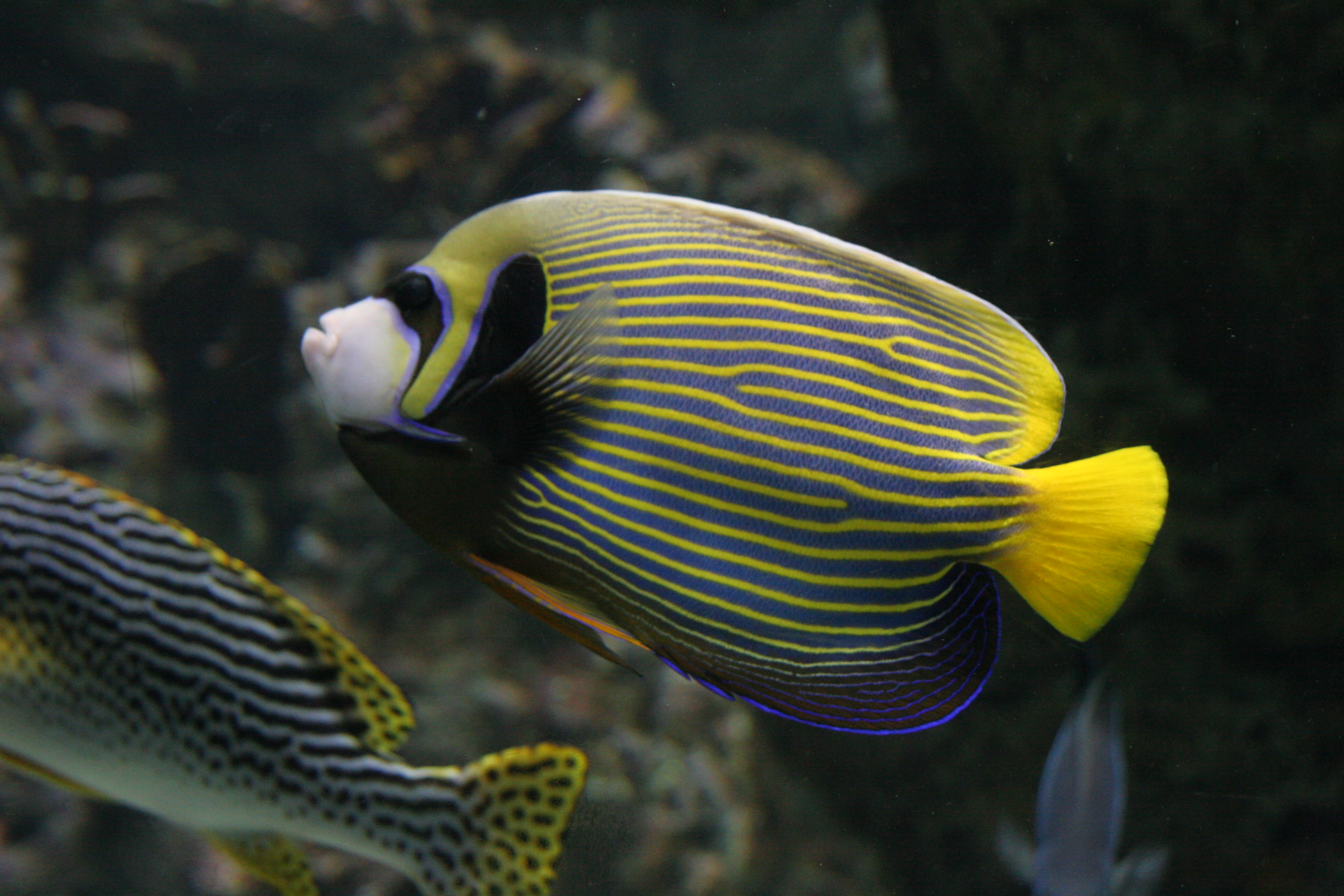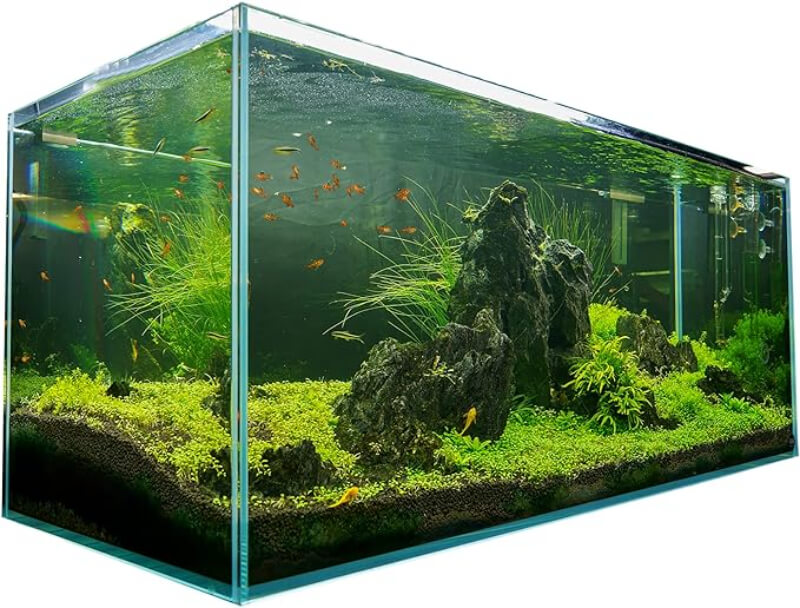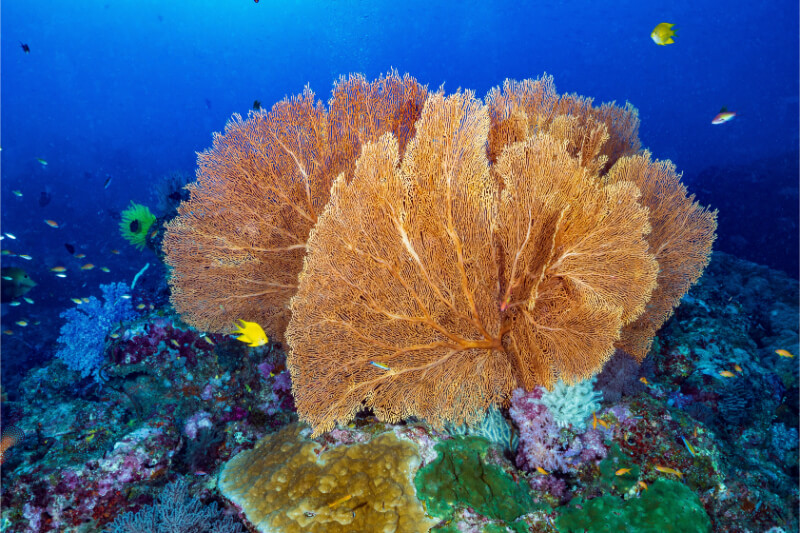One of the biggest pains in the butt with saltwater aquarium fish is not just those who are a threat to our corals, it’s those who are a threat to each other! Here are some tips for how to manage fish aggression in your reef tank.
Space
Despite their beauty, wild coral reefs are battlegrounds for every organism that lives there. The reef provides food, shelter, and potential mates – three things worth fighting for – so reef fish are actually some of the most aggressive and territorial creatures in the sea, pound for pound.
Territorial fish can be better managed, however, by selecting a tank with the maximum surface area (and space for territories,) versus a compact one. A 4’x2’x1’ 59-gallon frag or lagoon-style tank is infinitely better than a 2’x2’x2′, 59-gallon cube tank, especially when aggressive clownfish or territorial damselfish could claim all of that 2’ space for themselves. The longer the tank, the more room there is for fish to get away from each other, and the more success you will have when trying to combine them.
Decor
Most territorial fish simply want a space to call their own, and an object that they can claim and call home. This could be a flowerpot or piece of pipe, a rock, or a coral, but place two separate piles of rocks in a tank instead of one central one, and territorial fish are more likely to settle for one, leaving one free for someone else. Add three rock piles or bommies and you create three clearly demarcated territories, and so on…

Line of sight
Like a raging bull in a field, it’s what territorial fish can see that they find a territorial threat, so use decor to break up the line of sight across the length of the tank and your potential terrors will be calmer and less likely to try to conquer the whole space. Making simple territories from decor and blocking the line of sight works in freshwater with territorial cichlids, and saltwater fish are no different. It’s a simple yet effective tactic.

Avoid conspecifics
Although we see huge shoals of yellow tangs, powder blue tangs, and convict tangs in the wild, their shoaling enables them to raid the algae territories of other tangs and damselfish by using strength in numbers. In the aquarium, we just don’t have the space to enable shoals of fish to break up and take a rest from each other when not feeding, and that’s when the problems start.
The biggest aggression trigger to most of the territorial fish we keep is seeing another one of their own kind. To a resident fish, a newly added conspecific (member of the same species,) presents as an immediate threat to food, shelter, and potential mates – even if they are the potential mate! And they are often attacked. Unfortunately, most aggressive and territorial saltwater fish are best kept singly, unless using acclimation boxes. See below.
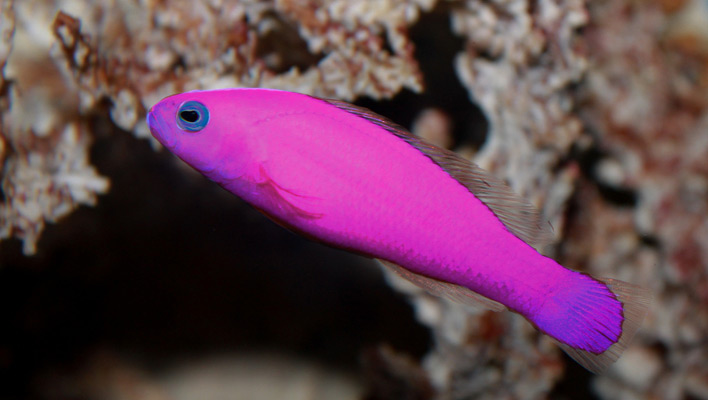
Avoid similar shapes and colors
The knock-on effect of that inbuilt threat and territoriality is that many fish are also hard-wired to attack anything that looks like their own kind, even if they are unrelated species. If you have clownfish, avoid other clownfish, Yellow tang, avoid anything high-bodied and yellow like a Lemonpeel angel, or even anything the same shape, like a Purple tang or a Gem tang.
These will be seen as the biggest threats to food and territory, and the fish that will cause the most problems when mixing. Instead use the full breadth of coral reef fish diversity to mix a yellow fish with a blue one, with a pink one, and with a black and white one. If you have a high-bodied fish like a tang, mix it with a slender-shaped fish like a wrasse, and so on. If you have a territorial tang, a territorial angel, and a territorial wrasse, avoid those families altogether for a quiet life.
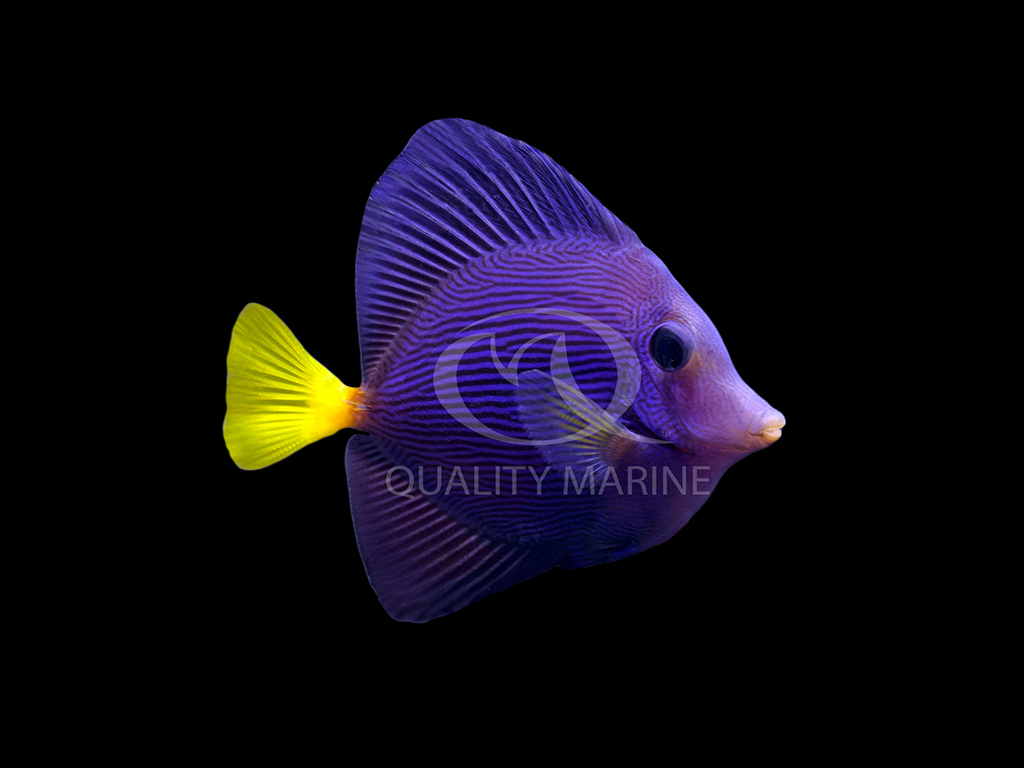
Feed well
Finding food and defending food sources is the biggest territorial driver on the reef, and you’ll notice aggression is often at its worst around feeding time. Combat this by feeding several times per day, and making sure that the aggressive, territorial fish are full to bursting before offering other smaller foods for the smaller, more timid species in the tank afterward.
Feed at both ends of the tank (another reason why long tanks work,) as one territorial fish can’t be in two places at once. Well-fed, fat fish are less aggressive because one of their fundamental boxes has been ticked for that day – finding food. And they will be much more tolerant of other fish in their space afterward. Surgeonfish, Angelfish, and Butterflyfish spend a huge amount of time foraging in the wild, so provide grazer blocks, paste, Romain lettuce, and other foods that are present throughout the day and can be picked, at will. It provides environmental enrichment too if you can present it in a way that forces them to find it and work a little, like pushing food into a pipe for butterflyfish, or a nori grazer for tangs. Well-fed fish are hardier, more disease-resistant, and more likely to breed.
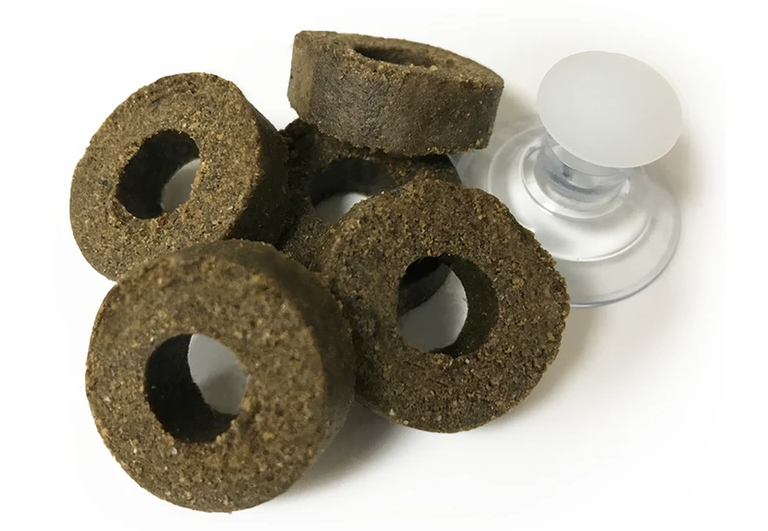
Try tank bred
Some wild fish don’t take so well to being so close to each other or being prevented from being able to escape each other at will. Many reef fish are spaced out across the reef for reasons like food scarcity or to find a mate, but captive-bred fish are more used to being in each other’s spaces (they were raised together in aquariums or vats,) and are more tolerant of each other as a result.
A tank-bred fish may settle for a smaller territory or no territory at all, and some retailers treat captive-bred angelfish differently to their wild counterparts as they act differently, like being less aggressive and preferring different foods. If you’re going to try some controversial species mixes, tank-bred may be your best bet at getting them to live together. They may even hybridize!
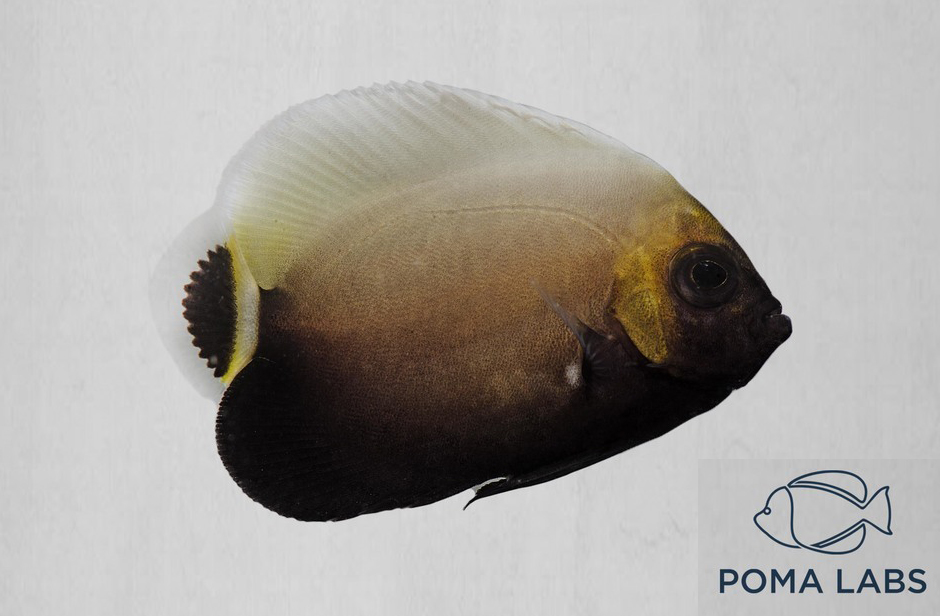
Try crowding
At the other end of the scale from spacing fish out is to crowd them, a method which works for hyperdominant cichlids from freshwater Lake Malawi. The idea behind this is that an ultra-aggressive fish cannot be in two places at once, or beat up two fish at once, so add 25 or even 50 fish to a space, and dominance by one individual is massively divided. He can take a rock as a residence and defend it, but if he chases a fish off he risks someone else moving in on his rock while he’s away.
Also by providing several potential mates of his own species, he will tend not to focus in and beat up on just one. His aggression is diffused amongst several females and they all get a chance to escape and take a breather while he picks out another target.
There are some caveats with crowding any fish – the filtration must be able to cope – there must be sufficient oxygen, sufficient food, and the fish have to be healthy in the first place, or parasitic infection from closely confined fish will be rife and you’ll have a wipeout. But crowding (and adding several fish each time,) can work for fish-only tanks containing large angelfish species, butterflyfish species, Anthias, and in huge tanks it can even work with tangs. It’s a high-risk strategy, but a “community” of large angelfish is the potential reward. However, just two or three individuals of large angelfish species would likely fail.
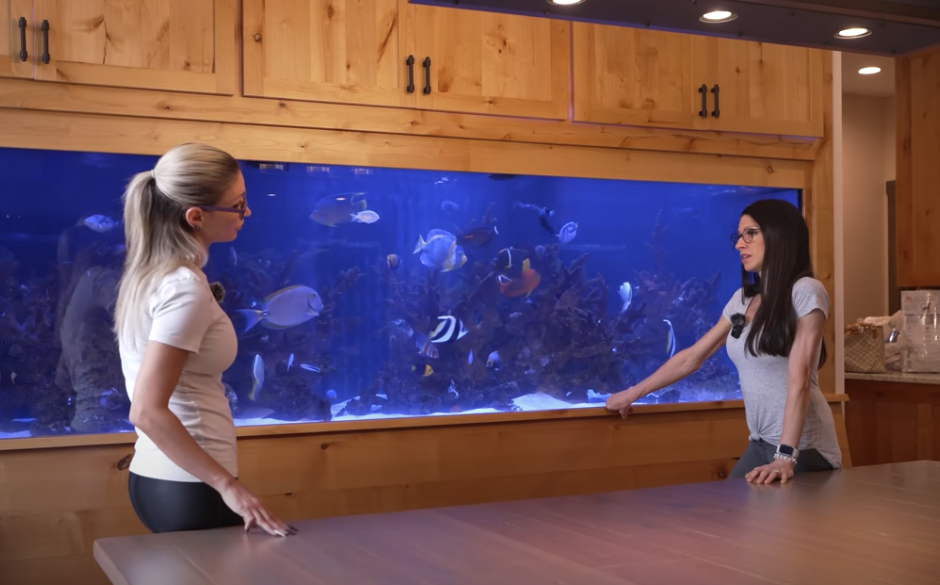
Acclimation boxes
Acclimation boxes are one of the triumphs of modern reefkeeping, as they do great work in introducing fish over a longer term and dealing with aggression. We used to use tank dividers to physically separate fish, but many modern reef tanks won’t allow for a full-size divider to be placed with the aquascape. The solution instead is a large, clear, perforated acrylic box.
You introduce the fish to the tank (but in the box), and it’s in the same water as the resident fish, but they can’t get at each other. Fish can be in acclimation boxes for days or even weeks if required, but the effect of then tipping a “known” fish into an existing community of fish versus a brand new one – an instantly perceived threat – is very different, and we highly recommend it.
Seasoned reefers will know that most territoriality comes in the first few days or hours after a new fish is introduced. This is a double whammy as you get an emboldened resident fish that knows every inch of the tank and is willing to defend it, versus a newly added, stressed fish with no territory which stands to get more stressed via territorial attacks. Use an acclimation box and the fish can be introduced once the initial threat and territorial displays have subsided.
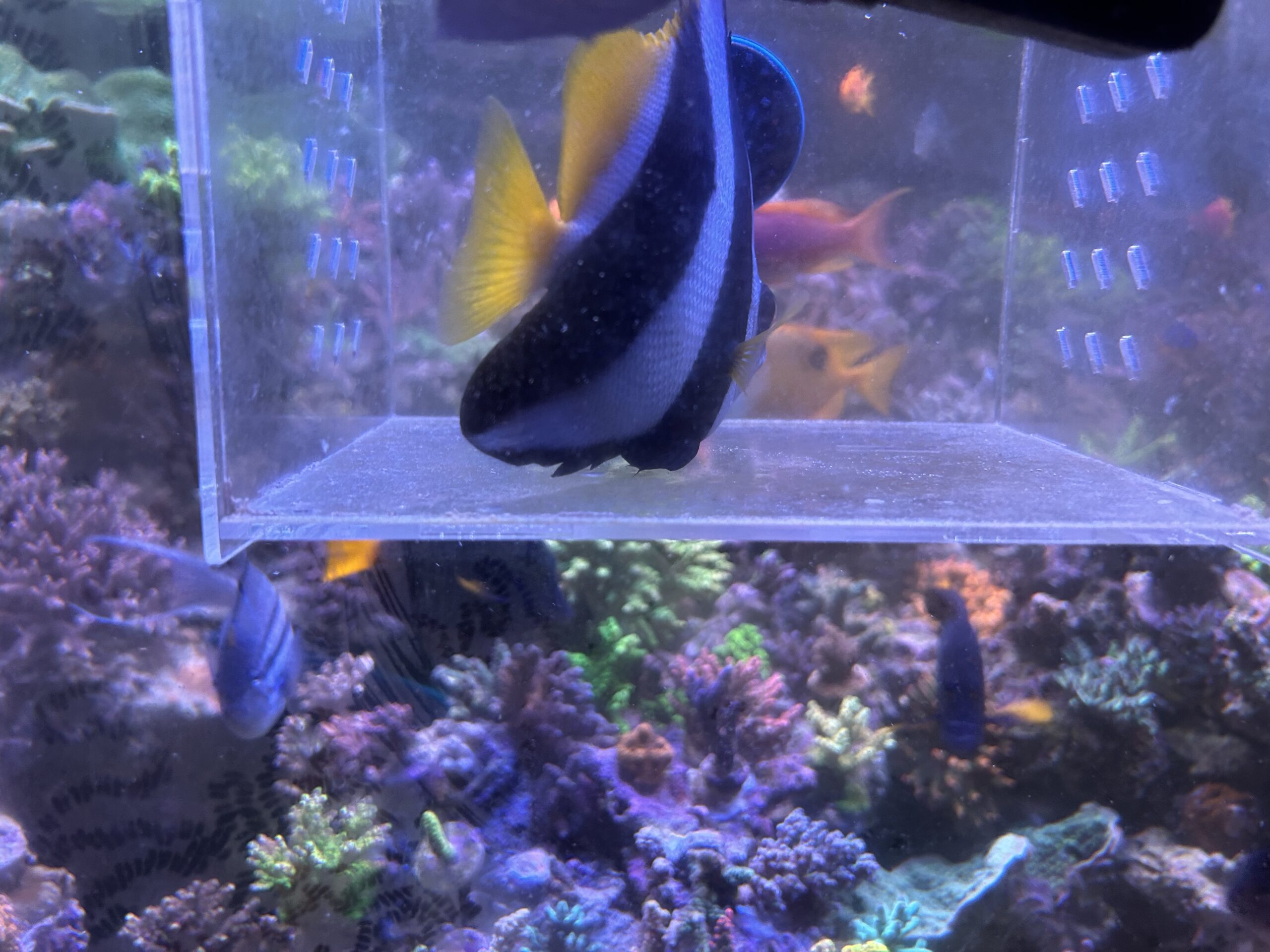
The six golden rules of mixing fish and managing aggression
- Choose a tank with a large surface area
- Aquascape to create territories and break up the line of sight
- Feed well and feed often
- Mix fish of different shapes, colors, and feeding habits
- Avoid conspecifics
- Use an acclimation box
Main image credit Alexander Baranov from Montpellier, France, CC BY 2.0

